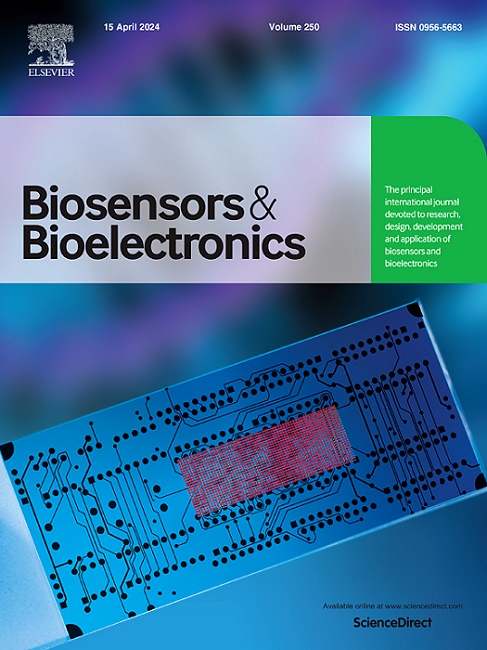Bioimpedance and electrophysiology measurements of engineered heart tissues outside the culture medium
IF 10.5
1区 生物学
Q1 BIOPHYSICS
引用次数: 0
Abstract
Engineered heart tissues (EHTs), composed of human stem cell-derived cardiomyocytes and fibroblasts, have emerged as promising tools for disease modeling and drug discovery due to their ability to replicate aspects of the function and structure of the heart muscle. While bioimpedance and electrophysiology measurements are powerful tools for monitoring EHTs, these techniques can be challenging to perform due to the high conductivity of the surrounding cell medium.
In this study, we explored the possibility of measuring bioimpedance and electrophysiology outside of the cell medium. To this end, we developed a platform that lifts EHTs from the culture medium during the measurements, thereby allowing the electrical current to flow directly through the tissues. The platform monitors contractility by fixed frequency impedance measurements, electrophysiology by field potential measurements, and structural changes through electrical impedance spectroscopy. Over two weeks of measurements, we observed increasing trends in contractility and field potential amplitudes, along with structural changes. No adverse effect on the EHTs were detected, ensuring their stability and viability throughout the monitoring process. Moreover, the impedance amplitude measured on the platform correlates with the contractile degree during drug experiments, serving as a reliable indicator of EHT functionality. Electrical stimulation with limited charge injection was also demonstrated. In conclusion, our platform offers a comprehensive and efficient method for monitoring EHTs and holds potential as a tool for cardiovascular disease modeling and drug screening.
培养基外工程心脏组织的生物阻抗和电生理测量
工程心脏组织(EHTs)由人类干细胞衍生的心肌细胞和成纤维细胞组成,由于其复制心肌功能和结构的能力,已成为疾病建模和药物发现的有前途的工具。虽然生物阻抗和电生理测量是监测eht的有力工具,但由于周围细胞介质的高导电性,这些技术可能具有挑战性。在这项研究中,我们探索了在细胞培养基外测量生物阻抗和电生理的可能性。为此,我们开发了一个平台,在测量过程中从培养基中取出eht,从而允许电流直接流过组织。该平台通过固定频率阻抗测量来监测收缩性,通过场电位测量来监测电生理,通过电阻抗谱来监测结构变化。在两周的测量中,我们观察到收缩性和场电位振幅的增加趋势,以及结构变化。没有检测到对eht的不利影响,确保了其在整个监测过程中的稳定性和活力。此外,在平台上测量的阻抗幅值与药物实验时的收缩程度相关,可以作为EHT功能的可靠指标。有限电荷注入的电刺激也得到了证实。总之,我们的平台提供了一种全面有效的监测EHTs的方法,并具有作为心血管疾病建模和药物筛选工具的潜力。
本文章由计算机程序翻译,如有差异,请以英文原文为准。
求助全文
约1分钟内获得全文
求助全文
来源期刊

Biosensors and Bioelectronics
工程技术-电化学
CiteScore
20.80
自引率
7.10%
发文量
1006
审稿时长
29 days
期刊介绍:
Biosensors & Bioelectronics, along with its open access companion journal Biosensors & Bioelectronics: X, is the leading international publication in the field of biosensors and bioelectronics. It covers research, design, development, and application of biosensors, which are analytical devices incorporating biological materials with physicochemical transducers. These devices, including sensors, DNA chips, electronic noses, and lab-on-a-chip, produce digital signals proportional to specific analytes. Examples include immunosensors and enzyme-based biosensors, applied in various fields such as medicine, environmental monitoring, and food industry. The journal also focuses on molecular and supramolecular structures for enhancing device performance.
 求助内容:
求助内容: 应助结果提醒方式:
应助结果提醒方式:


